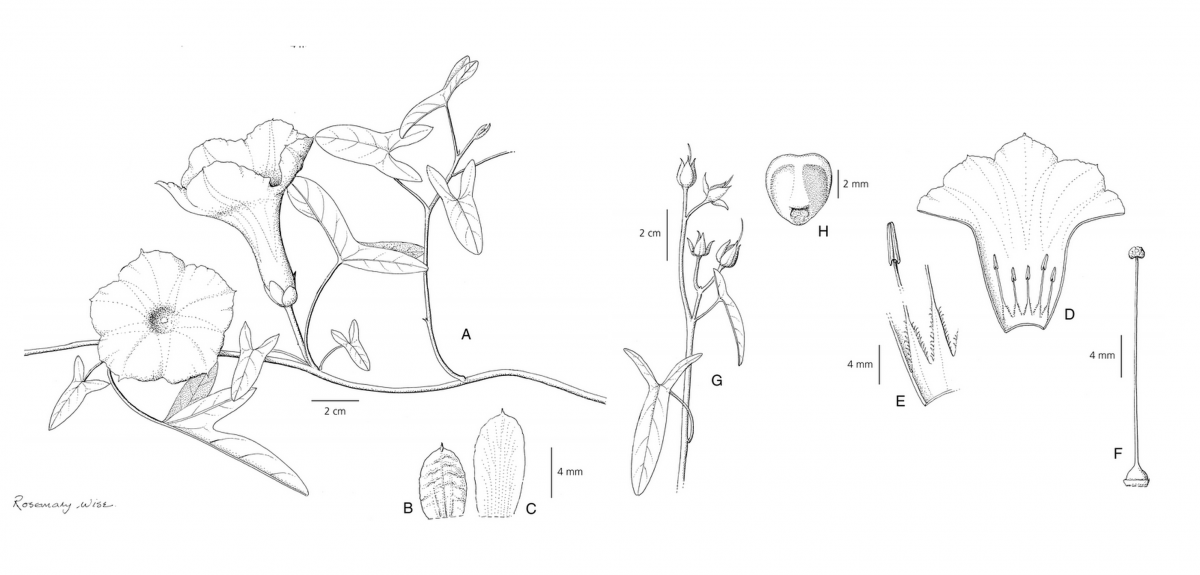
Creating a fast-track for accurately classifying plants
It can take botanists decades to accurately classify plants after they’ve collected and stored away samples from the wild. But now Oxford University researchers have developed a technique to streamline the process — and it’s already unearthing new species around the world.
In 2010, researchers from the Department of Plant Sciences, led by Dr Robert Scotland, published a paper that investigated how long it takes for plants to be described after they’ve been collected in the wild. The results came as a surprise: it turned out that just 14 percent of specimens were classified within five years, and on average it took 35 years for specimens to be recognised and classified as ‘new’. ‘People might imagine that researchers venture into the wild, point at something and say “that’s new”,’ explains Dr Scotland. ‘But it doesn’t work like that: mostly they get added to collections, then they're discovered at a later date.’
All the while, then, collected flowers sit dried and mounted on cardboard and placed in storage at herbaria for safekeeping. From their figures, the team estimated that of the 70,000 species of flowering plants thought to remain un-described, up to half may in fact sit in collections awaiting identification. Given the rate of discovery currently averages around 2,000 plant species per year, the team vowed to investigate whether there may be a way to expedite the process.
Generally, botanists perform one of two studies to describe plants in a given genus. The first, known as the Flora approach, is performed in a limited timeframe and describes all plant species in a particular country or region, using short descriptions and simple illustrations with no assessment of genetic differences taken into account. The second, referred to as the Monograph approach, takes a global view of all the species in a given genus, accurately demarcating each species and providing long descriptions, genetic analyses and detailed illustrations.
The latter is considered the gold standard in botanical taxonomy, not least because it provides a reliable means of identifying redundancies in existing classifications. But it often takes a long time to perform and involves intensive study. ‘It would be lovely to monograph the whole world, but that’s a pipe-dream,’ explains Dr Scotland. ‘Especially in the tropics, where there are too many plants, written about in too many places, often in too many different languages, with too much redundancy in existing names. The size of the task is just too big.’
Instead, the team thought there could be middle-ground between the two approaches. ‘We wondered if we might be able to combine some of the speed of a Flora approach with some of the rigour of a Monograph,’ explains Dr Scotland. ‘And we’ve ended up with what we call “foundation monographs”.’ The new approach combines the time-limited approach and short descriptions of the Flora approach with the genetic analyses and fieldwork of Monographs, enabling species to be uncovered quickly, but accurately. Crucially, it borrows content like drawings and genetic analyses, where they exist, from existing studies, in order to avoid duplicating work.
With a year of funding from Research Councils UK’s Syntax program, Dr Scotland’s team performed a one-year pilot study to create a foundation monograph for Convovulus (bindweed) — the first ever global study of the genus. It worked well: in 12 months, they recognised 190 species, including 4 new ones. ‘We showed that we’re able to catch the species that have slipped through the net in the past,’ explains Dr Scotland.
That was enough to help them secure a larger grant from the Leverhulme Trust to perform a three-year study of the Ipomoea (morning glories) genus — of which sweet potato is a member. Taking 1,500 samples from around the world, they sequenced DNA from the samples to identify key genes that can be used to create the genetic family tree of the species. Using those data, they were able to refute or corroborate existing species concepts, in the process identifying 18 new species and confirming the existence of 102 separate species in the genus from a single country, with many more to follow from other areas. From there, they were able to photograph and create detailed line drawings for those newly discovered species, finally publishing the foundation monographs in Kew Bulletin this September.
As far as Dr Scotland is concerned, we’re likely to see more species being identified like this in the future. “We’re probably seeing the end of the traditional approach to botanical taxonomy,” explains Dr Scotland.“That’s why we’re trying to do taxonomy in a time-efficient, clever way, at a scale that’s truly impressive.”
The most recent paper, entitled ‘Ipomoea (Convolvulaceae) in Bolivia’ is published in Kew Bulletin. The Convolvulus monograph, entitled ‘A foundation monograph of Convolvulus L. (Convolvulaceae)’, is published in Phytokeys. The illustrations for the research were funded by an NERC IAA award.